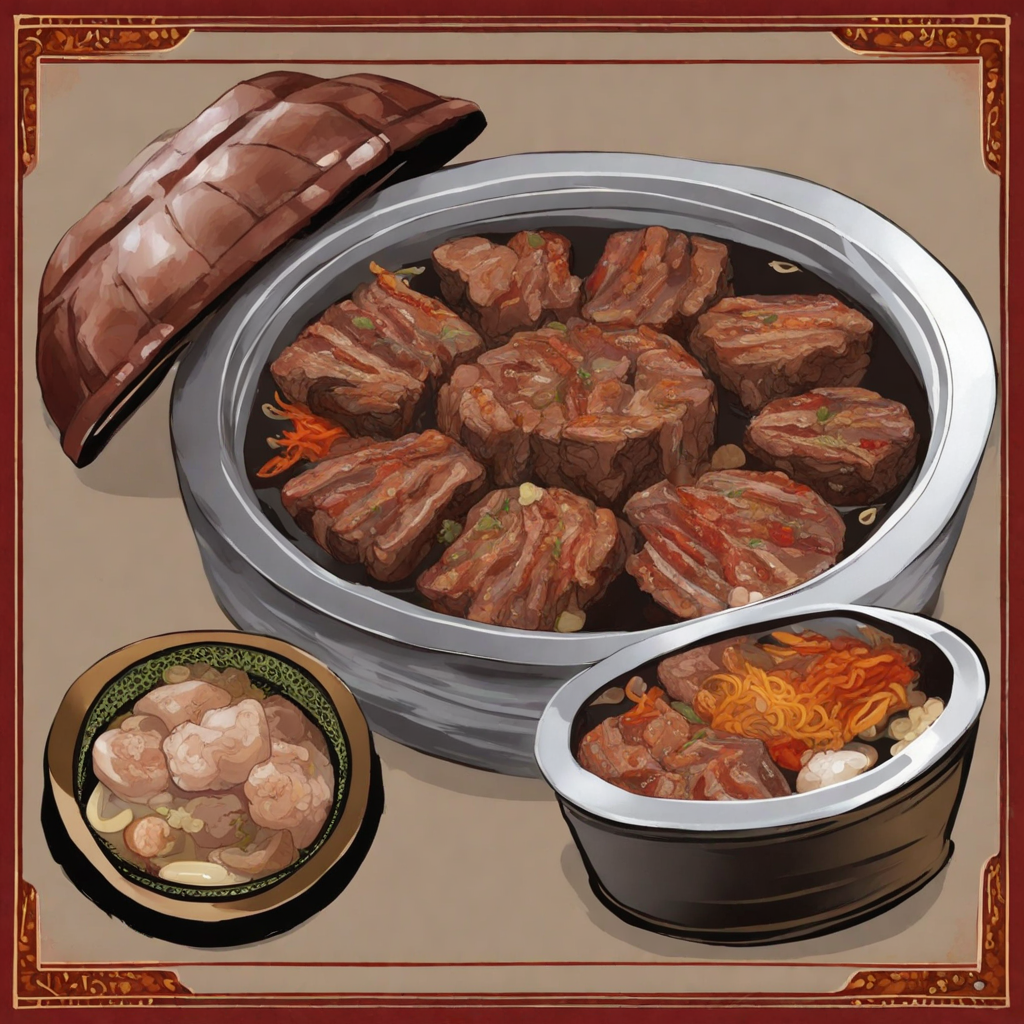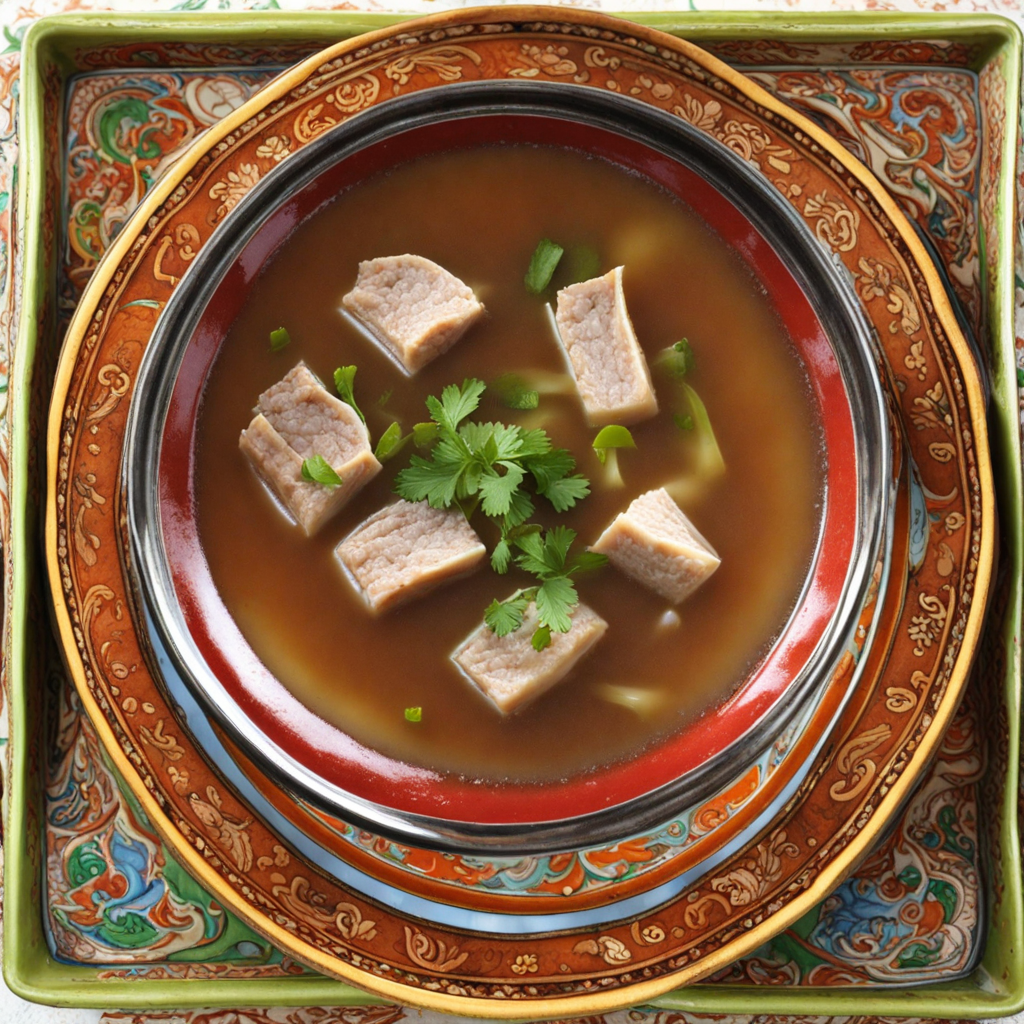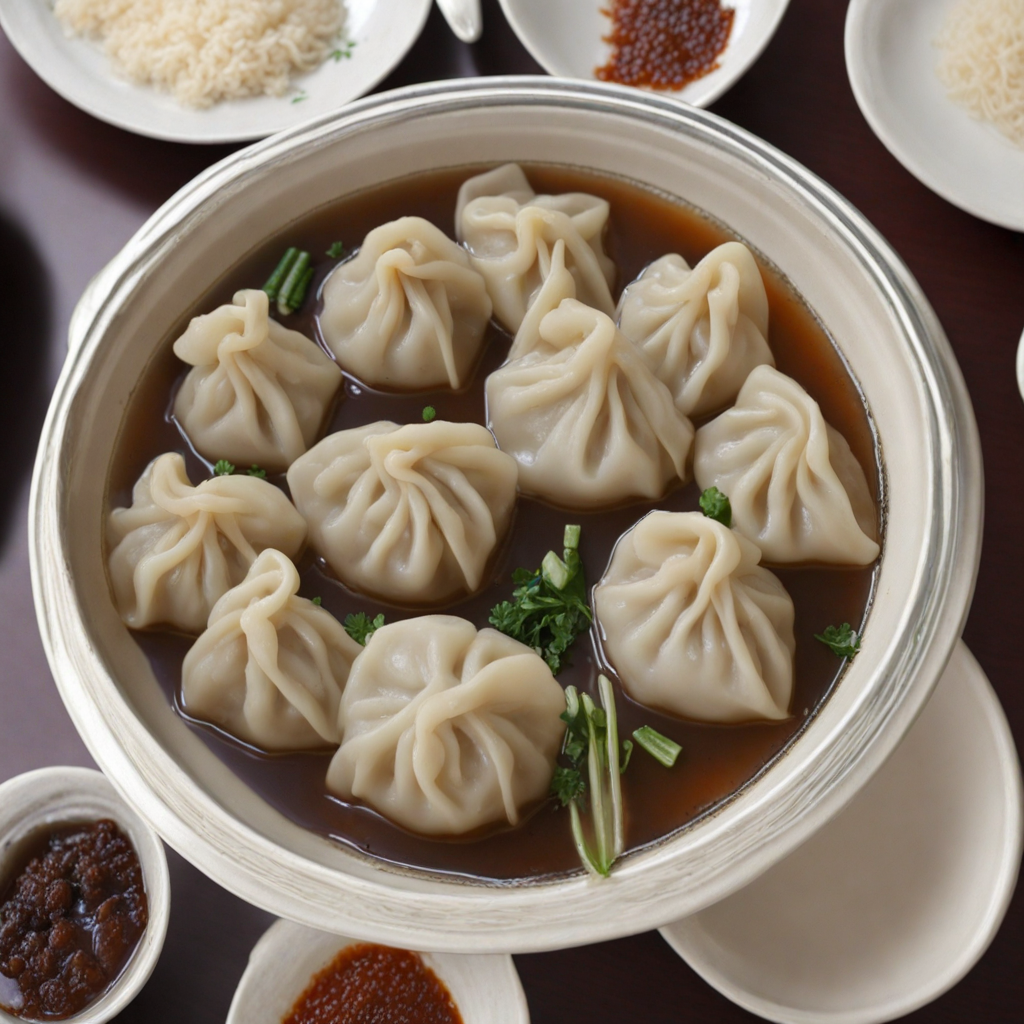Ul Boov
Ul Boov, a traditional Mongolian delicacy, is a unique type of pastry that embodies the rich cultural heritage of the region. This round, layered cake is often made from flour, sugar, and milk, offering a delightful balance of sweetness and texture. Each layer is carefully crafted and shaped, resembling the sun, which holds significant symbolism in Mongolian culture. The outer crust is slightly crispy, while the inner layers remain soft and tender, creating a pleasing contrast that is delightful to the palate. What sets Ul Boov apart is its intricate designs, typically adorned with patterns that reflect traditional Mongolian motifs. Often enjoyed during special occasions and festivals, this pastry is more than just a treat; it represents unity and celebration among families and communities. The cake is sometimes flavored with hints of cardamom or vanilla, adding a subtle warmth that elevates its flavor profile. Each bite transports you to the vast steppes of Mongolia, where the nomadic lifestyle and rich traditions are beautifully intertwined. Ul Boov is commonly served with tea, making it a perfect accompaniment for gatherings and social events. As you take a bite, you’ll experience a blend of textures and flavors that are both comforting and intriguing. The sweetness is balanced perfectly with a hint of richness from the milk, making it an ideal dessert for those looking to explore new culinary experiences. Embracing the spirit of Mongolian hospitality, Ul Boov invites you to savor a taste of the country’s history and traditions, offering a truly authentic experience.
How It Became This Dish
The History of Ул боов: Mongolia’s Traditional Delicacy #### Origins Ул боов, known as "ul boov" in transliteration, is a traditional Mongolian pastry that encapsulates the rich culinary heritage of the vast steppes of Mongolia. This delightful treat is not merely a food item; it is a symbol of hospitality and a testament to the nomadic lifestyle that has defined Mongolian culture for centuries. The origins of ul boov can be traced back to the Mongolian nomadic tribes, who relied on a diet that was heavily influenced by their environment and lifestyle. Traditionally, the nomadic pastoralists of Mongolia raised livestock such as sheep, goats, camels, and yaks. The harsh climate and the necessity for portability dictated their foodways, leading to the development of dishes that were simple yet nourishing. Ul boov, made primarily from flour, water, and animal fat, emerged as a practical food choice, easy to prepare and transport. The use of dairy products, like milk and butter, is also a hallmark of Mongolian cooking and can often be found incorporated into ul boov recipes, reflecting the importance of livestock in Mongolian life. #### Cultural Significance The significance of ul boov extends beyond its nutritional value; it embodies the hospitality and warmth of Mongolian culture. In many Mongolian households, the preparation of ul boov is a communal affair, bringing families together in the kitchen. It is often served during special occasions and celebrations, such as weddings, festivals, and the Mongolian Lunar New Year, known as Tsagaan Sar. During Tsagaan Sar, families prepare a variety of foods to honor their ancestors and welcome the new year. Ul boov holds a special place on the festive table, often showcased as a centerpiece. The pastry itself is typically shaped into unique forms and sometimes decorated with symbols that represent good fortune, prosperity, and health. The act of sharing ul boov with guests is a way to express generosity and respect, reinforcing social bonds within the community. Moreover, ul boov serves as a connection between generations, with recipes and techniques passed down through families. Grandmothers often teach their grandchildren the art of making ul boov, ensuring that this culinary tradition endures. The practice of making ul boov not only helps preserve cultural heritage but also fosters a sense of identity among Mongolians, especially those living in urban areas who may feel disconnected from their roots. #### Development Over Time As Mongolia underwent various socio-political changes, particularly during the 20th century, the preparation and consumption of ul boov evolved alongside these developments. The Soviet influence in Mongolia introduced new ingredients and cooking techniques, which led to some modernization of traditional recipes. While the basic components of ul boov remained the same, variations began to appear. Today, you might find ul boov filled with sweetened dairy, fruit jams, or even chocolate, catering to contemporary tastes. The globalization of food trends has also impacted ul boov’s place in Mongolian cuisine. With increased exposure to international culinary practices, some chefs and home cooks have started experimenting with fusion recipes, blending traditional Mongolian flavors with global influences. This evolution reflects a broader trend in many cultures where traditional foods are reimagined to appeal to modern palates, while still retaining their cultural significance. Despite these adaptations, the essence of ul boov as a symbol of hospitality and community remains unchanged. In urban centers like Ulaanbaatar, ul boov can be found in cafes and restaurants that specialize in traditional Mongolian cuisine. These establishments play a crucial role in keeping the culinary heritage alive, providing a space for both locals and tourists to experience the flavors of Mongolia. #### The Making of Ул боов The process of making ul boov is an art form that requires skill and practice. Traditionally, the dough is made from a mixture of flour, water, and sometimes salt, kneaded until it reaches the right consistency. The dough is then rolled out and cut into desired shapes, typically round or rectangular. Some variations feature intricate patterns, which are not only aesthetically pleasing but also carry symbolic meanings. The pastries are then filled, often with a mixture of ground meat, sweetened dairy products, or even vegetables, depending on the region and occasion. They are commonly deep-fried or baked until golden brown, resulting in a crispy outer layer that contrasts with the tender filling inside. The preparation process can be quite labor-intensive, but the rewards are well worth the effort, as ul boov is beloved for its comforting, hearty flavor. #### Modern Adaptations and Global Influence In recent years, there has been a resurgence of interest in traditional foods, including ul boov, as people seek to reconnect with their cultural roots. Food enthusiasts and chefs are increasingly turning to traditional recipes, often emphasizing the importance of using local, sustainable ingredients. This shift resonates with a global movement toward mindful eating and appreciation for artisanal foods. Social media has played a crucial role in this revival, with platforms like Instagram and TikTok allowing home cooks and chefs to share their ul boov creations with a wider audience. The visual appeal of ul boov, with its golden crust and enticing fillings, lends itself well to food photography, further popularizing this traditional dish. Furthermore, the diaspora of Mongolian people around the world has contributed to the globalization of ul boov. Mongolian expatriates have brought their culinary traditions to new countries, introducing ul boov to diverse audiences. Food festivals, cultural events, and pop-up restaurants celebrating Mongolian cuisine have helped raise awareness of ul boov and its significance. #### Conclusion In conclusion, ул боов is more than just a pastry; it is a cultural artifact that tells the story of Mongolia’s rich heritage and the resilience of its people. From its humble origins in the nomadic lifestyle of Mongolia to its place on modern tables, ul boov serves as a bridge between generations, encapsulating the essence of Mongolian hospitality and community. As the world continues to change, ul boov remains a beloved symbol of tradition and identity, reminding us of the importance of food in our cultural narratives. Whether enjoyed during a festive celebration or shared among family and friends, ul boov will undoubtedly continue to delight and nourish for generations to come.
You may like
Discover local flavors from Mongolia







